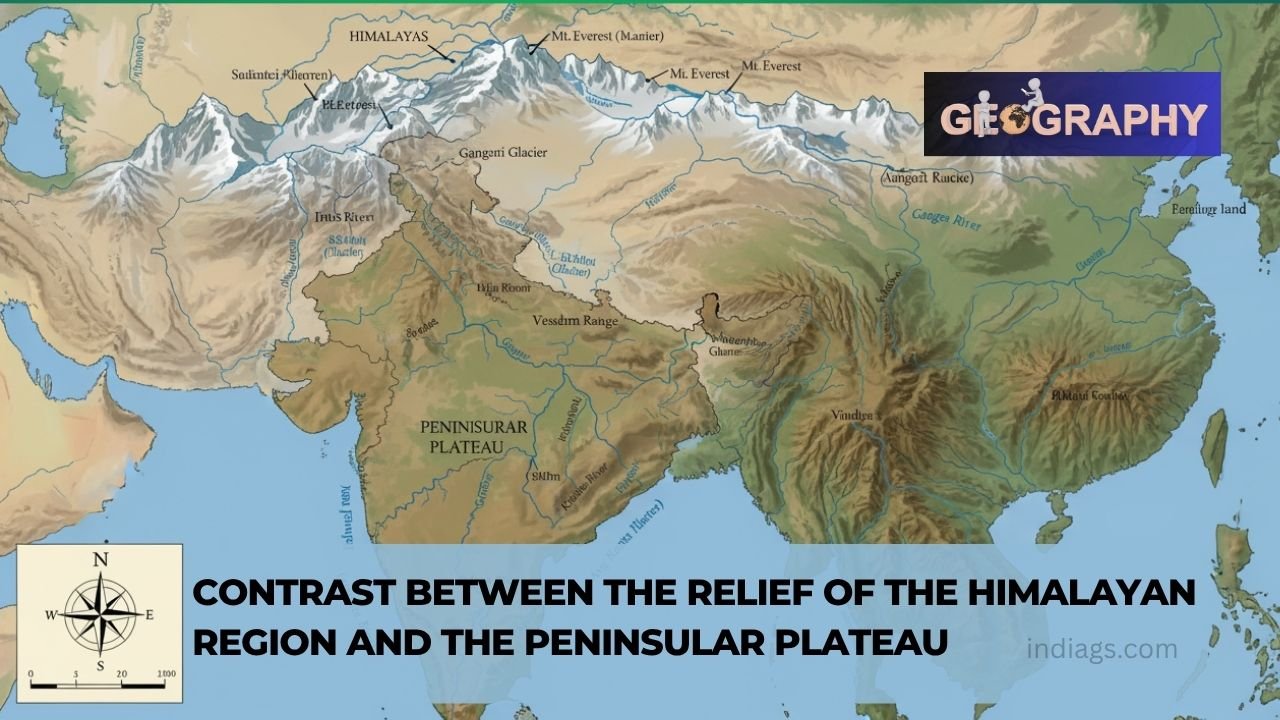India’s physical geography displays remarkable diversity. Among its most significant landforms are the Himalayan Region and the Peninsular Plateau — two contrasting relief features that define the subcontinent’s topography and influence its climate, rivers, and vegetation.
Origin and Age
Himalayan Region:
The Himalayas are young fold mountains, formed about 40–50 million years ago due to the collision between the Indian Plate and the Eurasian Plate. This tectonic activity is still ongoing, making the Himalayas geologically active.Peninsular Plateau:
In contrast, the Peninsular Plateau is one of the oldest landmasses on Earth, formed during the Precambrian era. It is a stable block of the Indian shield, not affected much by recent tectonic movements.Advertisement
Altitude and Elevation
Himalayas:
Average elevation above 6,000 meters, with Mount Everest (8,848 m) being the world’s highest peak.Peninsular Plateau:
Average elevation around 600–900 meters, with peaks like Anai Mudi (2,695 m) in the south.
Structure and Relief
Himalayas:
Characterized by lofty peaks, deep valleys, and steep slopes, the Himalayan region shows rugged relief. It has three parallel ranges — the Himadri (Great Himalaya), Himachal (Lesser Himalaya), and Shiwalik (Outer Himalaya).Peninsular Plateau:
The plateau has broad, gently sloping surfaces and rounded hills. It includes ranges like the Aravalli, Vindhya, Satpura, and the Western & Eastern Ghats. Its relief is comparatively uniform and eroded due to millions of years of weathering.
Soil and Vegetation
Himalayas:
Soil is mostly immature and thin, but fertile alluvial deposits occur in foothill valleys. Forests include coniferous and alpine vegetation.Peninsular Plateau:
Soil is red, black, and laterite, supporting crops like cotton, millets, and pulses. Vegetation is mainly tropical and deciduous.
Drainage and Rivers
Himalayas:
Source of perennial rivers like the Ganga, Yamuna, Indus, and Brahmaputra, fed by snow and glaciers.Peninsular Plateau:
Rivers like Godavari, Krishna, Narmada, and Mahanadi are seasonal, depending on monsoon rainfall, except some west-flowing rivers like Narmada and Tapi.
Economic and Human Importance
Himalayas:
Act as a climatic barrier, protecting India from cold winds and attracting rainfall. They also host hydropower projects, tourism, and pilgrimage sites.Peninsular Plateau:
Rich in minerals (iron, coal, manganese) and a hub for industrial and agricultural development. Major cities like Bengaluru, Hyderabad, and Nagpur are located here.




